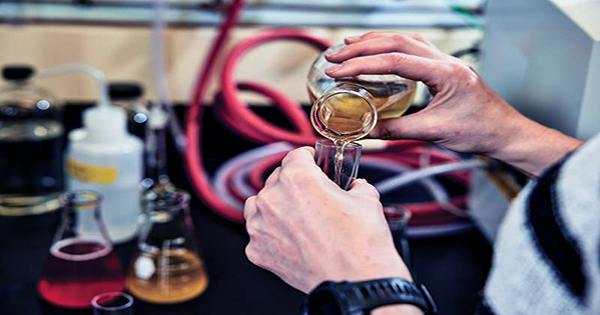Many businesses are attempting to become carbon-neutral, whether as a true commitment or as a marketing opportunity. Young Henrys, an Australian microbrewery, has even loftier ambitions, aiming to prevent significantly more warming than their brewing activities cause.
Although they are not quite there yet, cooperation with scientists aimed at reducing methane emissions from cows has reached several key milestones. Breweries aren’t the highest emitters of greenhouse gases, but “brewing just one six-pack of beer leaves a CO2 hangover that takes a tree two days to absorb,” according to a press release from the University of Technology, Sydney (UTS). This captured by certain brewers and used to carbonate their beer.
However, many smaller brewers find carbon capture equipment unsuitable for their needs, so they let the gasses escape and buy CO2 from elsewhere to use in their beer, according to Dr Janice McCauley of UTS.
Young Henrys, a Sydney microbrewery, approached McCauley and his colleagues in an attempt to avoid this, the UTS team came up with the idea of putting microalgae vats on the brewery floor and feeding them waste CO2. “It’s like we’re putting in a mini-forest on the brewery floor,” Dr Leen Labeeuw of UTS stated. This might make a small difference in terms of keeping the planet cool, but the partnership has greater ambitions.
The Commonwealth Scientific and Industrial Research Organisation (CSIRO) in Australia have recently discovered that specific seaweeds alter the microbiota of cattle’s digestive tracts. In the best-case scenario, they may nearly completely remove the methane they create, which is now one of the most significant sources of greenhouse gas emissions.
Although some have lauded it as a miracle treatment for the problem, the idea’s scalability questioned, considering that the most effective seaweeds are scarce in nature. Microalgae, on the other hand, is “extremely adaptable; it can be cultivated on a small size in the brewery using tubular bioreactors,” according to McCauley, but it also has the ability to scale up for bigger manufacturers. Twenty trillion algae cells may be contained in a single 400-liter bioreactor.
McCauley told IFLScience that UTS has a significant collection of algae varieties. She and her colleagues are looking for plants that have similar benefits to seaweed and can be easily cultivated in Young Henry’s vats.
They initially used laboratory experiments to restrict the field, and now they are putting the most promising strains through a mock cow’s stomach made from genuine bovine digestive systems and fed as authentically as possible.
“If this succeeds, we’ll go on to a live feeding study,” McCauley said. She went on to say that the team is looking for algae species with big cell sizes, which make them simpler to harvest, as well as those that can tolerate a broad variety of temperatures and high CO2 concentrations. The cows must then enjoy the flavor.
If this method of growing microalgae is successful, delivery should not be a problem, at least on a modest scale. Young Henrys, like other brewers, already sends its wasted grain to nearby farmers, who find it beneficial to cows’ nutrition and may be especially useful during droughts or floods when the grass is scarce. As a supplement, microalgae might readily introduce.
Because the methane cow’s exhale is so much more potent as a warming gas than CO2, limiting even a few dairies’ emissions might have a considerably greater impact than merely preventing Young Henry’s own gasses from reaching the environment.
The seaweeds fed to cows by the CSIRO boost their growth rate, at least in moderation, providing producers with an incentive beyond the environmental advantages. It hoped that microalgae fed on brewer’s waste might have similar results.















